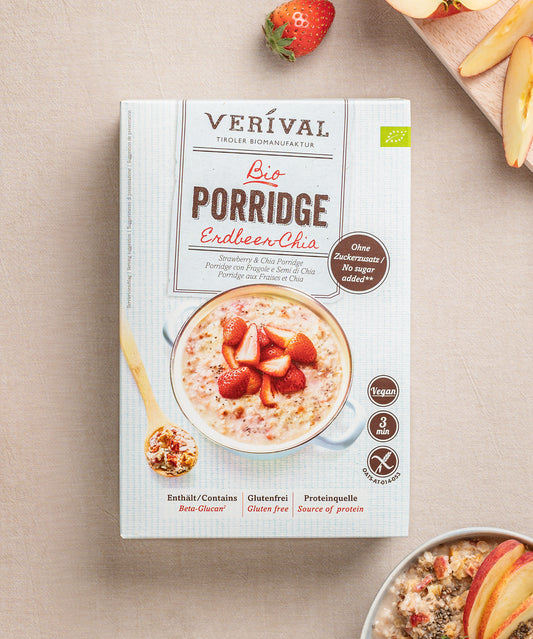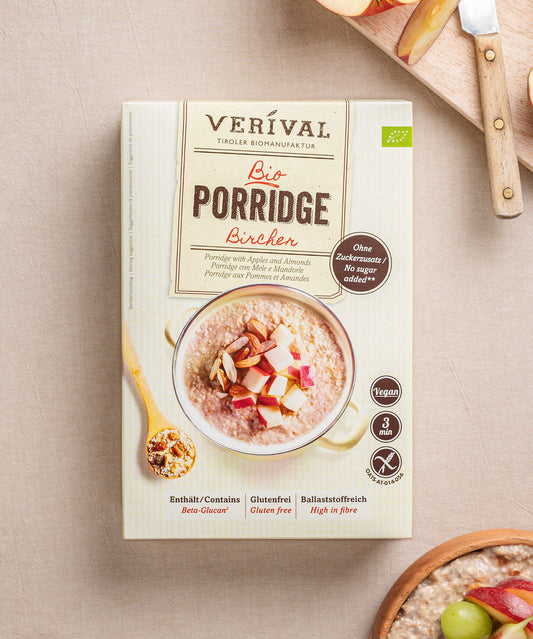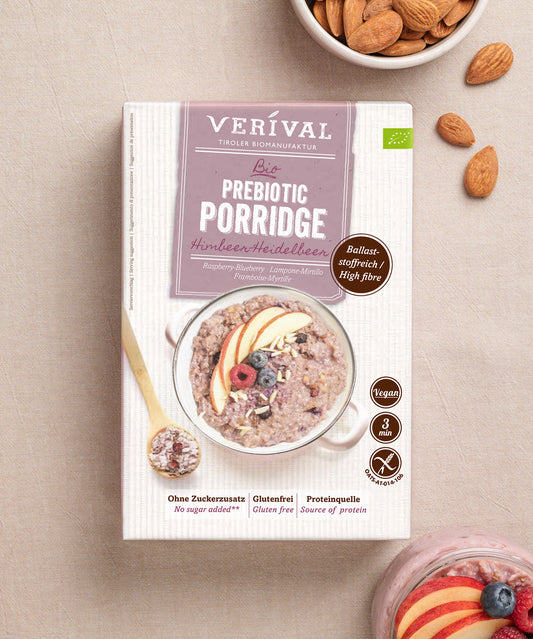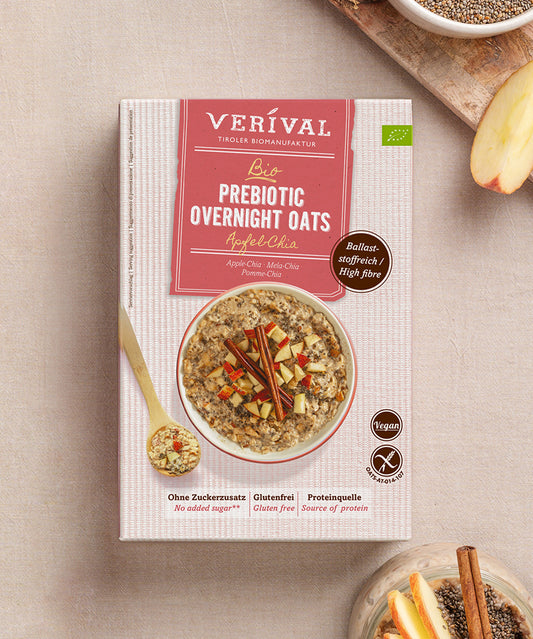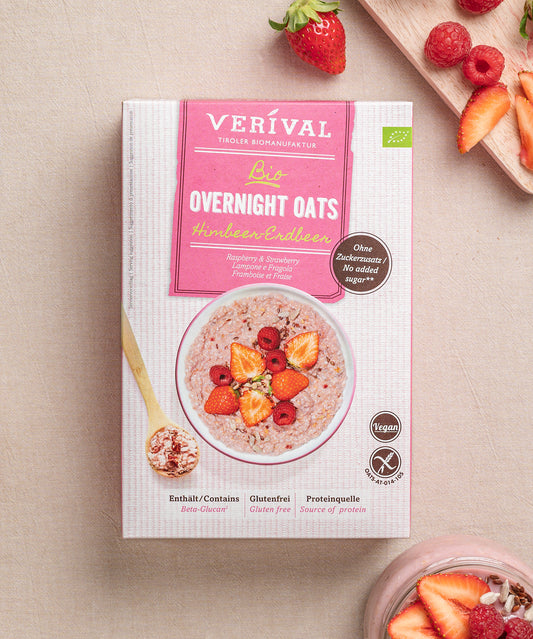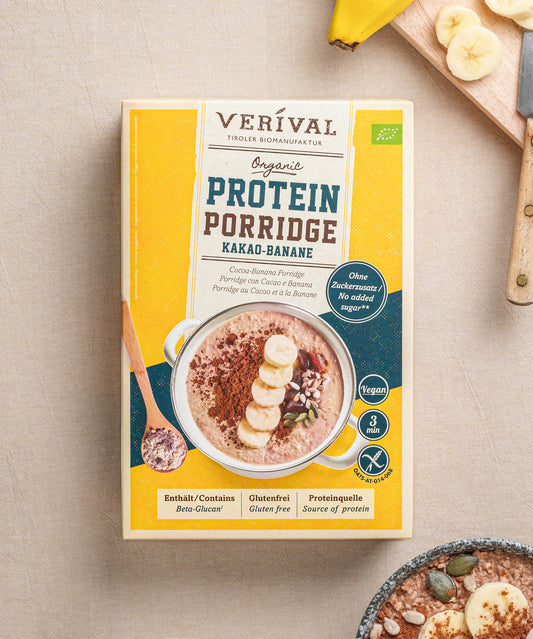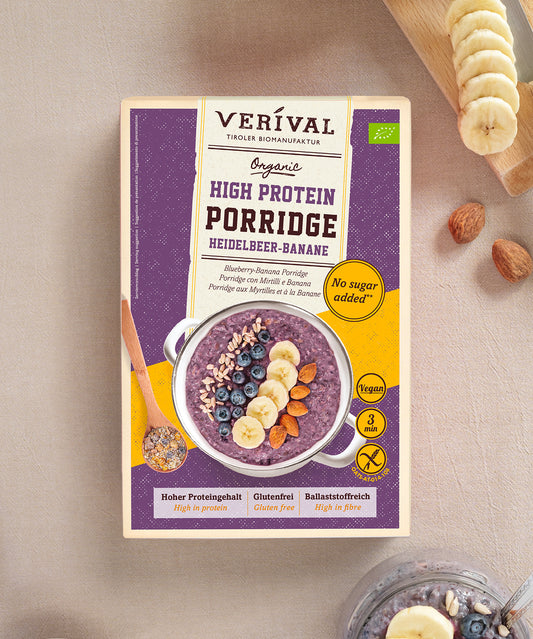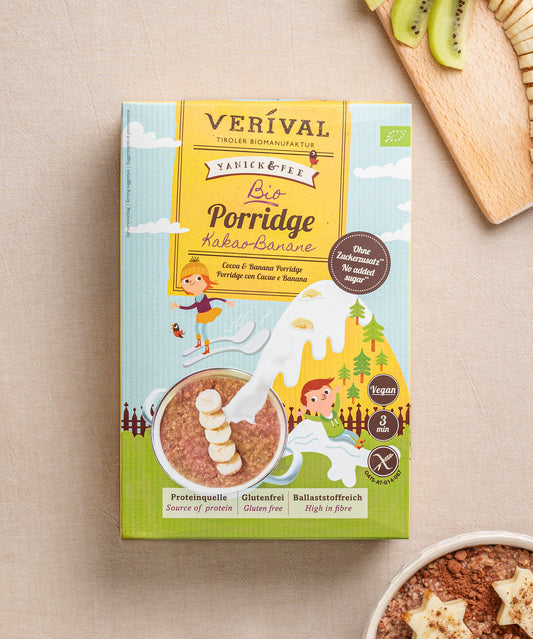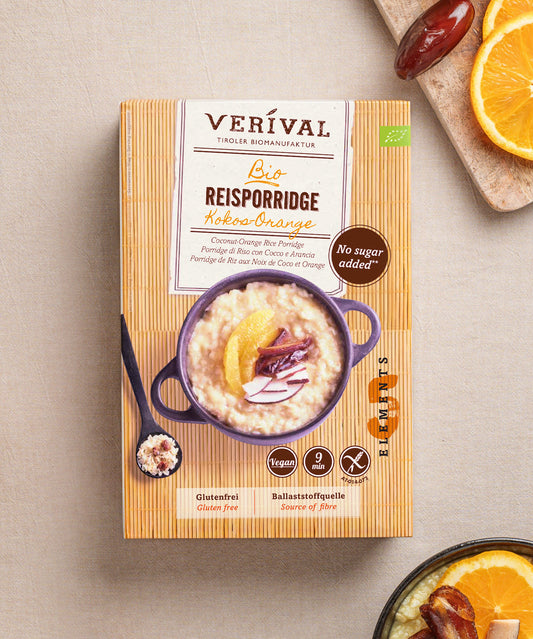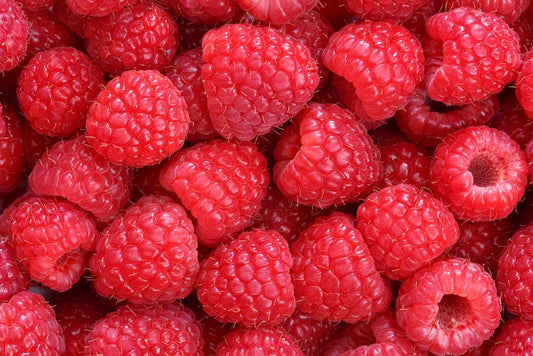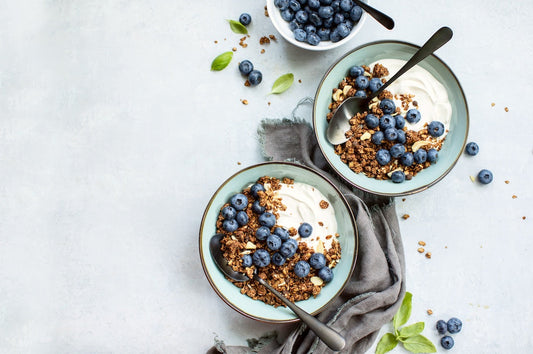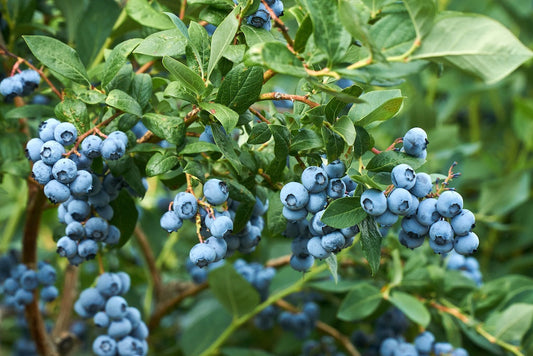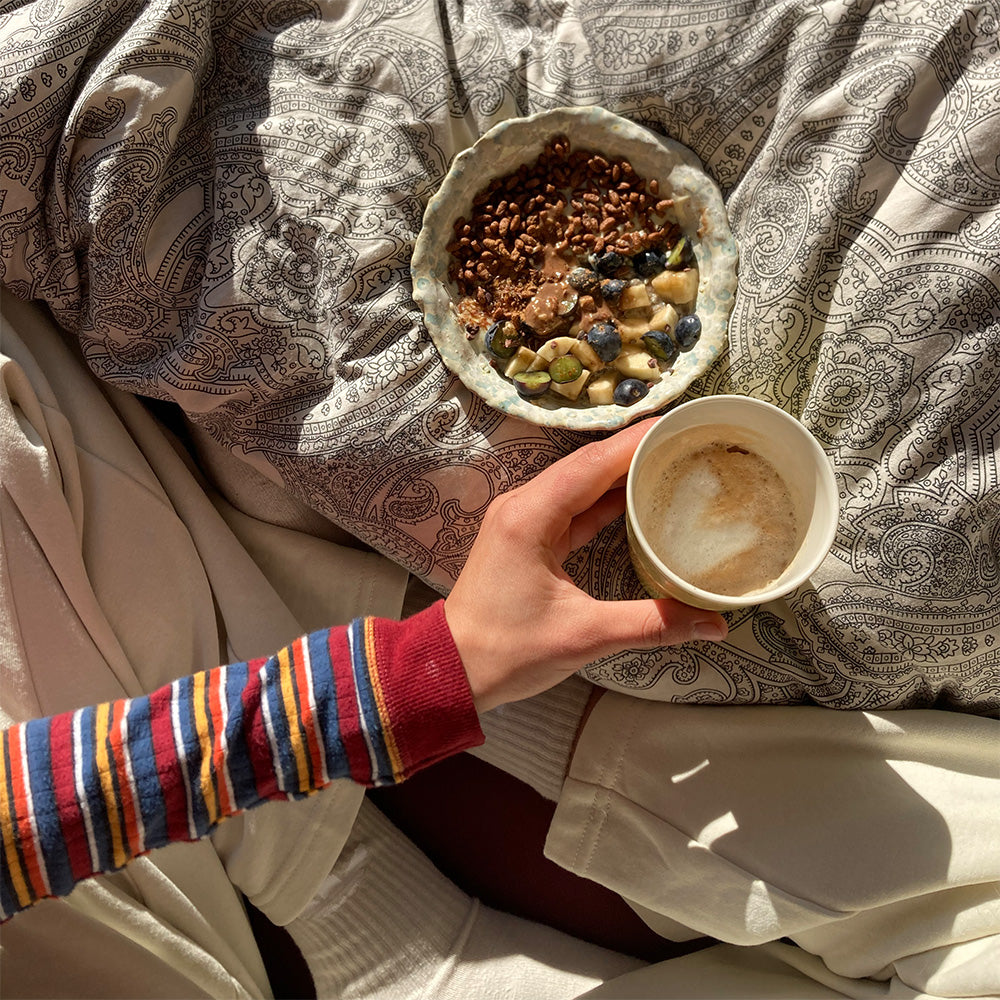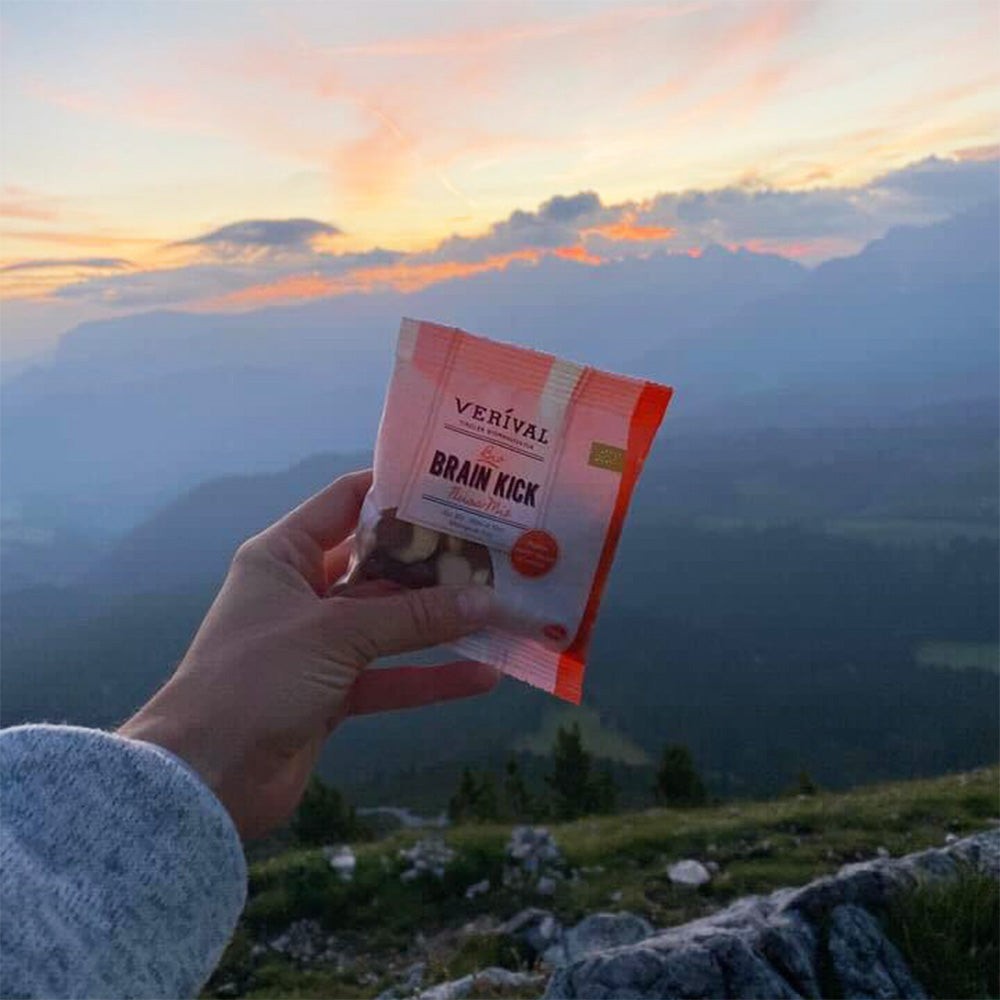Dietary fibre and fibre-rich foods play a crucial role in our health and should therefore not be missing from any balanced diet. They are indigestible components of plant-based foods that serve as ‘ballast’ for our digestion. They have numerous positive effects on our health and play an important role in supporting a healthy digestive system.
In this blog post, we will look at a list of high-fibre foods, provide tips on how to prepare high-fibre meals, discuss daily fibre requirements and portion sizes, and provide additional tips for healthy gut function. A high-fibre diet is an important part of a healthy lifestyle, and we invite you to learn more about the importance of fibre and incorporate it into your diet to reap the many benefits.
Fibre – read more about a high-fibre diet
What is fibre and why are high-fibre foods healthy?
Dietary fibre is the non-digestible part of plant-based foods that plays an important role in our diet and health. Often referred to as ‘food fibre’, it is found in large amounts in various foods such as grains, legumes, vegetables and fruits.
There are two main types of dietary fibre: soluble and insoluble fibre. Soluble fibres dissolve in water and form a gel-like substance. They are found, for example, in oat flakes, legumes and some fruits such as apples and berries. Insoluble fibres, on the other hand, do not dissolve in water and remain largely unchanged through the digestive tract. They are mainly found in whole grains, vegetables and many fruits.
Both types of fibre serve important functions in the body. Soluble fibre aids digestion by binding water and contributing to a softer stool consistency. It can also help lower cholesterol levels and regulate blood sugar levels. Insoluble fibre, on the other hand, promotes bowel health by stimulating intestinal movement and preventing constipation.
Together, dietary fibres play a crucial role in maintaining a healthy digestive system. They help to regulate bowel movements, promote healthy gut flora and support the overall health of the digestive tract. A high-fibre diet is therefore important to optimally support these functions and maintain health.
Important: Our good intestinal bacteria feed on water-soluble dietary fibres, which they use primarily to produce short-chain fatty acids. These fatty acids provide energy for the colon mucosa and can improve the protective functions in the intestine.
The benefits of a high-fibre diet
A high-fibre diet offers a variety of health benefits. Here are some of the most important advantages associated with a sufficient intake of dietary fibre.
Fibre helps to promote healthy digestion by supporting bowel movements and preventing constipation. It increases the volume of stool, thus facilitating the passage of intestinal contents and contributing to regular defecation.
In addition, a high-fibre diet helps you lose weight. High-fibre foods often have a lower energy density and help you feel full for longer. This means that a high-fibre diet can help you manage your weight by reducing overeating and helping you cut down on calories.
Fibre lowers your cholesterol level because soluble fibres have the ability to bind cholesterol and reduce its absorption in the intestines. By lowering cholesterol, high-fibre foods can help reduce the risk of heart disease.
Furthermore, a high-fibre diet can help control your blood sugar levels. Fibre slows the absorption of glucose in the digestive tract, resulting in a slower and more even release of glucose into the bloodstream. This is how a high-fibre diet can regulate blood sugar levels and reduce the risk of diabetes.
You're preventing many diseases! By promoting healthy digestion, controlling cholesterol levels and regulating blood sugar levels, high-fibre foods can reduce the risk of heart disease, diabetes and certain cancers, such as bowel cancer.
A high-fibre diet offers a wide range of health benefits. By incorporating high-fibre foods into your diet, you can help to promote good digestion and gut health, manage your weight and reduce your risk of chronic disease. Digestive problems or digestive disorders can usually be avoided.
List of high-fibre foods
A high-fibre diet requires a targeted selection of foods that are high in fibre. Here is a list of high-fibre foods that you can incorporate into your diet:
Wholegrain products
Oats, wholegrain bread, quinoa, brown rice and wholegrain pasta are excellent sources of fibre. They contain the fibre of the whole grain, including the outer part of the shell, which contains a lot of valuable dietary fibre.
Legumes
Lentils, beans, soybeans, chickpeas and peas are high in fibre and also provide valuable vegetable protein. They can be used in a variety of ways in soups, stews, salads or as a side dish.
Vegetables
Broccoli, Jerusalem artichokes, Brussels sprouts, kale, salsify, carrots, spinach, celery and artichokes are just a few examples of vegetables that are high in fibre. These varieties contain both soluble and insoluble fibre and provide a wide range of nutrients for a healthy diet.
Fruit
Apples, berries, pears, oranges and bananas are not only delicious, but also rich in fibre. Fruit also provides valuable antioxidants and vitamins that contribute to overall health. The most well-known fibre, pectin, is found in apples just under the skin – so it's best not to peel them!
Nuts and seeds
Chia seeds, flaxseeds, almonds, walnuts and sunflower seeds are high-fibre options for snacks or to add to dishes. They also contain healthy fats and other important nutrients, so make sure to incorporate this superfood into your diet regularly!
High-fibre grains
Brown millet, buckwheat, amaranth and barley are some examples of high-fibre grains. These can be used as alternative options to white flour products to increase the fibre content of your meals.
The Verival Porridge - tasty and healthy
Incorporating high-fibre foods into your diet
Increasing your fibre intake gradually can be an effective way to incorporate high-fibre foods into your diet. Here are some tips on how to do this:
Start slowly by gradually adding high-fibre foods to your meals. For example, if you have been eating mostly refined white bread, you can gradually switch to wholemeal flour and wholemeal bread. This will allow your body to adjust to the increased fibre intake and avoid possible digestive discomfort.
Breakfast is a great opportunity to incorporate high-fibre foods into your diet. You can combine oats or wholemeal muesli with fresh fruit and nuts. Smoothies with berries and flaxseed are also a good choice. Make sure you use high-fibre grain products such as wholemeal bread or pasta.
Combining different high-fibre foods in a meal can enhance the effect. For example, you could prepare a vegetable soup with legumes and wholemeal rice or enjoy a salad with quinoa and a variety of vegetables. These combinations not only provide a high fibre intake, but also a variety of nutrients.
Remember to drink enough water when you increase your fibre intake, as fibre binds water and adequate hydration is important for healthy digestion.
A high-fibre diet can contribute to improved long-term health. By gradually incorporating high-fibre foods into your diet, you can maximise the positive impact on your digestion, weight management and overall health.
High-fibre foods: daily fibre intake and portion sizes
The recommended daily intake of fibre for adults by the German Nutrition Society (DGE) is around 25 to 38 grams per day, depending on age, gender and individual needs. It is important to aim for this target in order to benefit from the health advantages of a high-fibre diet.
To identify the fibre content in foods, check the nutrition information on food packaging. This will provide information on the fibre content per serving. You can also access online resources to look up the fibre content of foods.
It is important to pay attention to the portion sizes of high-fibre foods to ensure that you get enough fibre. Here are some examples of portion sizes of high-fibre foods:
Whole grain bread: One slice (about 30 grams) contains about 2-3 grams of fibre.
Oats: Half a cup (about 40 grams) contains about 4-5 grams of fibre.
Lentils: Half a cup (about 100 grams) of cooked lentils contains about 7-8 grams of fibre.
Broccoli: Half a cup (about 78 grams) of cooked broccoli contains about 2-3 grams of fibre.
Apples: One medium apple (about 180 grams) contains about 4-5 grams of fibre.
Chia seeds: One tablespoon (about 15 grams) contains about 4-5 grams of fibre.
It's important to keep an eye on recommended portion sizes and include a variety of high-fibre foods in your meals to ensure a balanced fibre intake.
By meeting your daily fibre needs and keeping an eye on the portion sizes of high-fibre foods, you can ensure that you reap the health benefits of a high-fibre diet.
What's more, there are many high-fibre recipes to help you meet your fibre requirements. Porridge, for example, is an ideal dish if you want to eat more fibre. By combining oats and other seeds such as chia seeds, linseed, psyllium husks, bananas and more, you can create the perfect high-fibre breakfast. See also our fibre chart.
Fibre-rich breakfast from VERIVAL
Further tips for a healthy gut with fibre-rich foods
In addition to a high-fibre diet, there are other factors that contribute to promoting healthy gut health. Here are some additional tips to consider:
Adequate fluid intake is of great importance for healthy digestion and bowel function. You should drink at least 1.5 to 2 litres of water a day and also consume fluids rich in fibre such as fruit juices, vegetable juices and herbal teas. Sufficient fluid intake helps to soften the stool and prevent constipation.
Regular physical activity not only promotes general health but also gut health. Regular exercise stimulates intestinal motility and improves digestion. Try to get at least 30 minutes of exercise a day, whether it's walking, jogging, cycling or other activities you enjoy.
Stress can have a negative impact on gut health. Try to reduce stress and practice effective stress management techniques such as meditation, yoga or breathing exercises. Getting enough sleep is also important, as a lack of sleep can affect the digestive system. Aim for 7-9 hours of sleep per night to give your body enough rest and recovery.
By following these additional tips for healthy gut function, you can support the effects of a high-fibre diet. A balanced combination of a high-fibre diet, adequate fluid intake, regular physical activity, stress management and sufficient sleep can help to improve your digestion and gut health.
Conclusion: high-fibre foods
A high-fibre diet plays an important role in maintaining a healthy gut and offers numerous benefits for our body. Fibre promotes digestion and intestinal health, supports weight management, lowers cholesterol levels, regulates blood sugar levels and reduces the risk of heart disease, diabetes and certain types of cancer.
To reap the benefits of a high-fibre diet, it is important to incorporate these plant fibres into our daily diet. Foods that are high in fibre include wholegrain products such as oats, wholegrain bread and quinoa, legumes such as lentils, beans and chickpeas, vegetables such as broccoli, carrots and spinach, fruits such as apples, berries and pears, as well as nuts, seeds and high-fibre cereals such as chia seeds, flaxseeds, almonds, brown millet, buckwheat, bran (oat bran, wheat bran) and amaranth are high in fibre.
It is advisable to gradually increase your fibre intake and to incorporate high-fibre foods into different meals, especially at breakfast. Combining high-fibre foods in one meal can maximise the effect.
Overall, a high-fibre diet is an important part of a healthy lifestyle. By incorporating high-fibre foods into our diet while paying attention to adequate fluid intake, physical activity, stress management and sleep, we can promote the health of our gut and benefit from improved health in the long term. Take the first step towards a high-fibre diet and experience the positive effects on your well-being and gut health.
We also have a few recipe ideas for your perfect high-fibre breakfast:
Oatmeal breakfast with yoghurt and banana
Healthy oatmeal breakfast – easy to prepare and wonderfully versatile. What's more, oats provide you with all the nutrients you need for a good start to the day: long-chain carbohydrates for a lasting feeling of satiety, vegetable protein for extra power, and healthy fats and fibre that are good for your digestion. A balanced breakfast like oats, porridge, or muesli is healthy and gives you the energy you need for a great day.
Preparation time 5 min.
Cook time 0 min.
Soaking time 1 hr
Total time 1 hr 5 min.
Course: Breakfast, Frühstück
Keyword: healthy breakfast, porridge, oats, overnight oats, porridge
Servings: 1 serving
Calories: 440.9 kcal
Accessories
- Bowl or (sealable) jar
- Spoon
- Knife
Ingredients
- 50 g oats (approx. 4 tbsp)
- 100 g yoghurt or plant-based alternative
- 1 banana
Toppings
- 1 handful of blueberries
- 1 tsp peanut butter
Preparation
- Put the oats (approx. 4 tbsp) and the yoghurt in a bowl or jar and mix well.
- Cut the banana into thin slices and mix in.
- Cover the oatmeal-yoghurt mixture, place it in the fridge and let it soak for at least an hour. Our tip: Simply mix it the night before and let it soak in the fridge overnight. This saves time!
- Take your breakfast out of the fridge and add a dollop of peanut butter and some blueberries. Done!
Nutritional information
Serving: 304 g | Calories: 440.9 kcal | Carbohydrates: 63.5 g | Protein: 15.6 g | Fat: 12.5 g
The whole world of Verival breakfasts – this way
Frequently asked questions
Where is most of the fibre found?
Fibre is mainly found in plant-based foods such as wholegrains, pulses, vegetables, fruit, nuts and seeds. The exact amount can vary depending on the food, so it is important to check the nutrition table.
Which foods are high in fibre?
High-fibre foods include wholegrain products, pulses, vegetables, fruit, nuts and seeds, and high-fibre cereals. By including these foods in your diet, you can meet your daily fibre requirement and benefit from their health advantages. Vary your choices to get a variety of fibre sources.
How do you get 30g of fibre a day?
To get 30g of fibre a day, include high-fibre foods such as wholegrain products, pulses, vegetables, fruit, nuts and seeds in your meals and snacks. Increase your intake gradually and vary your selection to ensure a balanced fibre intake. Incidentally, isolated dietary fibres such as inulin, pectin or combined mixtures are now also available in powder, chewable tablet or drink form, for example.
What foods contain dietary fibre?
Dietary fibre is found in plant-based foods such as wholegrain products, legumes, vegetables, fruit, nuts and seeds, as well as in fibre-rich types of grain. Incorporating these foods into your diet will help you meet your daily fibre needs and benefit from their health effects. Diversity is important to get a wide range of fibre sources.
Are oats high in fibre?
Yes, oats are high in fibre. They contain both soluble and insoluble fibre. Half a cup of oats contains about 4 grams of fibre. By eating oats as part of a balanced diet, you can increase your fibre intake and benefit from the associated health advantages, such as improved digestion and feeling fuller for longer.
What is the microbiome?
The microbiome refers to the community of microorganisms in our bodies, particularly in the gut. It plays an important role in digestion, the immune system and overall health. A healthy microbiome is crucial for well-being, while imbalances can be linked to disease.
What are prebiotics?
Prebiotics are non-digestible fibres that serve as food for healthy intestinal bacteria. They promote the growth of these beneficial bacteria and contribute to a healthy microbiome. Foods such as chicory, artichokes and oats contain natural prebiotics.
What are probiotics?
Probiotics are live microorganisms that support gut health. They survive the stomach and have positive effects on the microbiome, digestion and immune system. Yoghurt, fermented foods and probiotic supplements are common sources of probiotics.
Are there any side effects of a high-fibre diet?
Although a high-fibre diet has many health benefits, increasing your fibre intake too quickly can cause digestive issues such as bloating, abdominal cramps and diarrhoea. It is therefore important to increase your fibre intake slowly while also increasing your fluid intake to avoid these side effects.
Which foods are the highest in fibre?
Some of the best sources of fibre are flaxseed, chia seeds, avocados, black beans and lentils. In addition, whole grains such as oats and brown rice, as well as various fruits and vegetables, such as apples, pears, carrots and broccoli, are also very high in fibre.
How much fibre should we consume every day?
The German Nutrition Society recommends that adults consume about 30 grams of fibre every day. This amount can be achieved with a varied diet that is rich in whole grain products, fruit, vegetables and legumes. It is important to increase your fibre intake slowly and to drink enough to avoid digestive problems. But if possible, always choose a slice of wholemeal bread.


